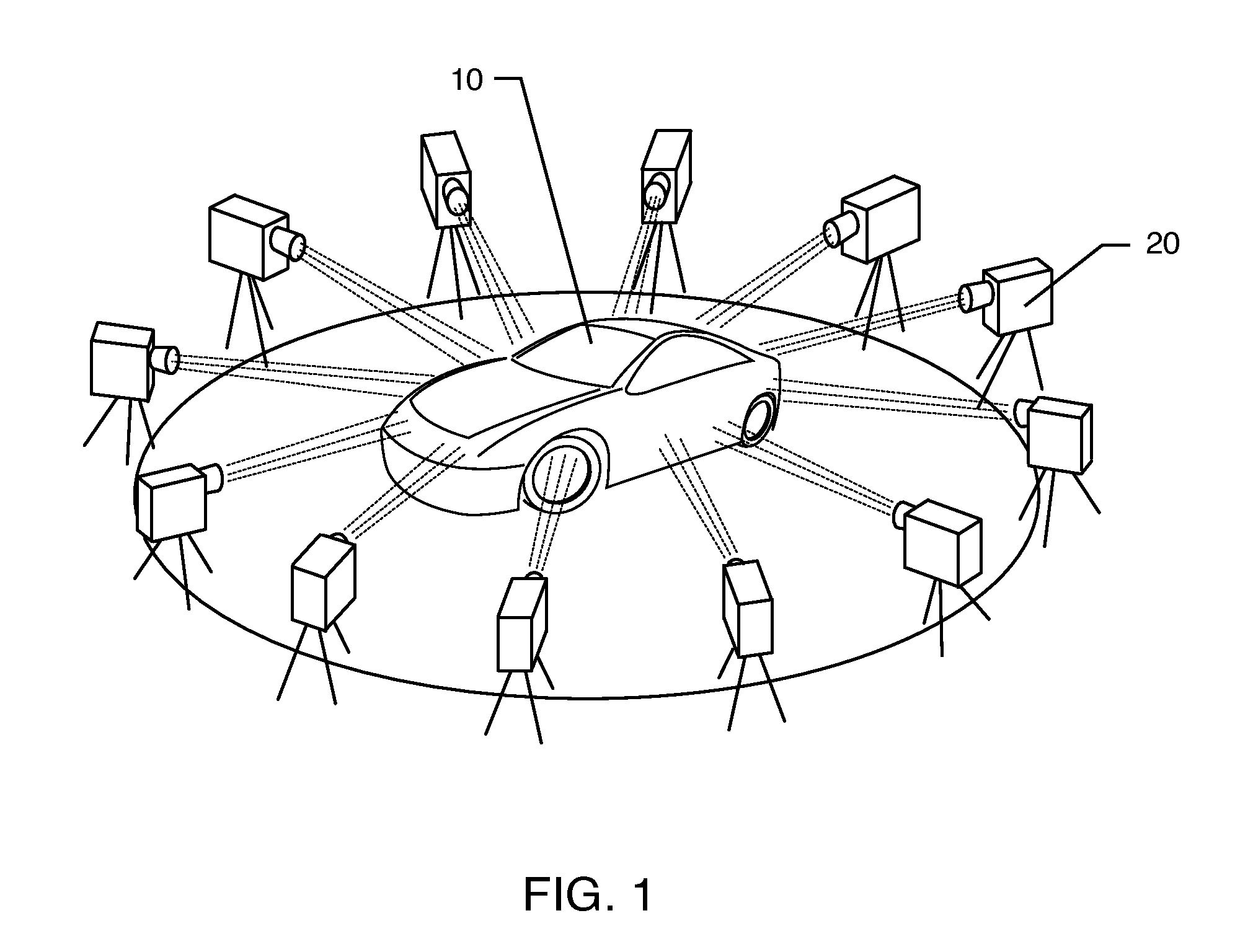Systems and methods for creating three-dimensional image media
a technology of three-dimensional images and media, applied in the field of media for three-dimensional image generation systems, can solve the problems of not giving three-dimensional images are limited to viewing angles, and methodologies and systems cannot give the appearance of a three-dimensional object suspended in space, etc., to enhance the full three-dimensional effect and reproduce the media content accurately
- Summary
- Abstract
- Description
- Claims
- Application Information
AI Technical Summary
Benefits of technology
Problems solved by technology
Method used
Image
Examples
Embodiment Construction
[0046]As shown in the accompanying drawings for purposes of illustration, the present invention resides in systems and methods for creating three-dimensional image media for use with a display system that allows a viewer to walk around and see the image in three-dimensions from multiple perspectives, e.g., front, back, left and right sides, or at any one of a number of viewing perspectives 360° around the object, such as from planar, cylindrical or spherical perspectives. The system and method described herein creates the illusion of a three-dimensional image without having to wear special glasses, and is different from a three-dimensional volumetric display, as volumetric images are more like transparent holograms. The system and method uses actual film or digital photography or three-dimensional animation to record or render a plurality of viewable images from a number of different angles or perspectives on a projector or spinning screen. There are different methodologies for prod...
PUM
 Login to View More
Login to View More Abstract
Description
Claims
Application Information
 Login to View More
Login to View More - R&D
- Intellectual Property
- Life Sciences
- Materials
- Tech Scout
- Unparalleled Data Quality
- Higher Quality Content
- 60% Fewer Hallucinations
Browse by: Latest US Patents, China's latest patents, Technical Efficacy Thesaurus, Application Domain, Technology Topic, Popular Technical Reports.
© 2025 PatSnap. All rights reserved.Legal|Privacy policy|Modern Slavery Act Transparency Statement|Sitemap|About US| Contact US: help@patsnap.com



